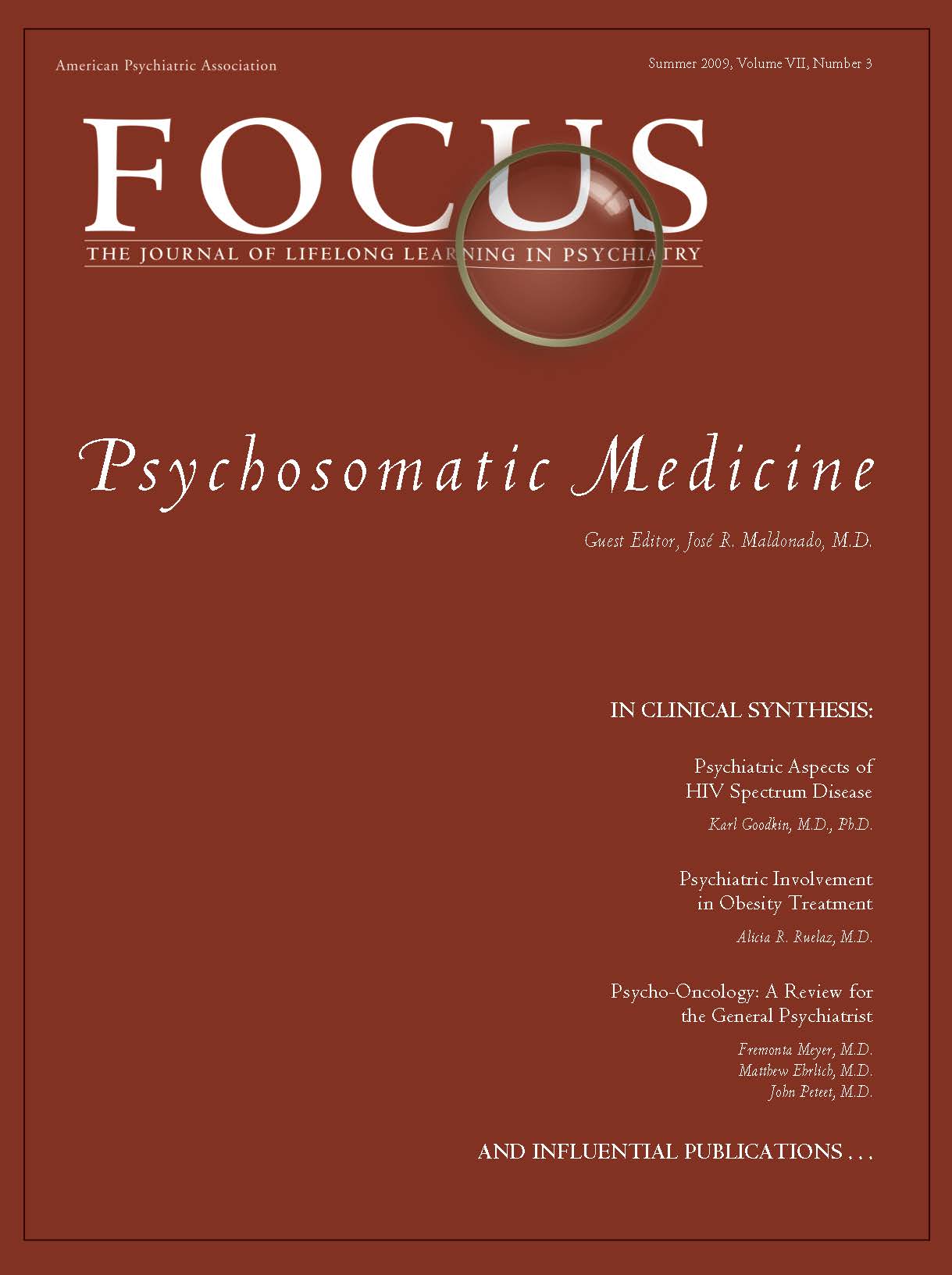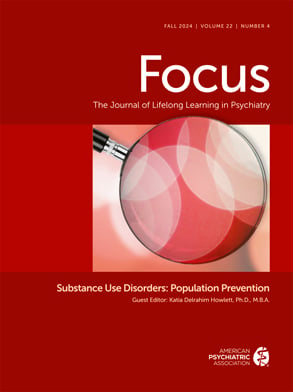I have been asked to work up a patient who requires a liver transplant; how should I proceed?
In the assessment of any patient being considered as a potential transplant recipient, the main issue is whether he or she meets medical and psychosocial listing criteria. The medical criteria have been relatively well established by the United Network for Organ Sharing (UNOS) and, more specifically, have been defined for liver transplant recipients by the Model for End-Stage Liver Disease (MELD) system developed by the Mayo Clinic.
The issue of psychosocial criteria is less standardized, both regarding tools and techniques used. Even though every organization regulating transplantation procedures recommends or requires
psychosocial evaluations as a prerequisite for transplantation, the published literature regarding specific instruments that reliably measure psychosocial variables predictive of better transplant outcomes is scarce. In fact, it reveals that transplant programs and psychosocial expert consultants use different techniques and psychosocial eligibility criteria to evaluate prospective transplant candidates (
1). Despite these discrepancies, a survey of transplant programs showed that certain conditions were endorsed as “absolute contraindication to transplantation” by 70% of responders (
2). These included the following:
•.
Current addictive drug use
•.
Current heavy alcohol use
•.
History of multiple suicide attempts
Despite the lack of standardization, as psychiatric consultants we can enhance transplant success by assessing patients for predictive risk factors associated with poor adherence/compliance and thereby enhance the selection process. The way I see it, the goals of a psychosocial pretransplant evaluation should include the following:
•.
Promoting fairness and equal access to care
•.
Maximizing optimal outcomes and wise use of scarce resources
•.
Ensuring that the potential for benefits outweighs surgical risks to the patient by identifying potential risk factors (i.e., substance abuse, compliance issues, or serious psychopathological conditions) that may result in increased risk of postoperative noncompliance and morbidity
•.
Providing information to develop treatment planning for individuals at high risk:
—Identifying the patient's level of neuropsychiatric and cognitive functioning
—Developing a psychiatric treatment plan to address current psychiatric problems and help minimize preventable problems
—Implementing appropriate treatments that reduce harm and mitigate risk
Several years ago, in an attempt to eliminate bias and standardize the psychosocial evaluation process for solid organ transplant candidates, my team and I studied the available literature on transplantation and the factors that seem to make a contribution regarding graft success. As a result we have developed a comprehensive pretransplant solid organ evaluation battery: the Stanford Integrated Psychosocial Assessment for Transplantation (SIPAT). The scale addresses only psychosocial variables that are supported by evidence-based data for treatment compliance, quality of life, and graft survival (
3). According to our review of the literature, the psychosocial factors that appear to better predict patient's adherence and graft survival fall in the following eight domains (which include a total of 18 identified risk factors):
•.
Environmental variables and social support (3 items)
•.
Desire/willingness for transplant (1 item)
•.
Compliance/adherence (1 item)
•.
Understanding of illness and transplant process (2 items)
•.
Lifestyle factors (1 item)
•.
Substance abuse and risk of recidivism (5 items)
•.
Psychological factors (4 items)
•.
Truthful versus deceptive behavior (1 item)
Based on the above 18 factors, the SIPAT provides an overall risk severity score for psychosocial factors important in predicting posttransplant behavior, compliance, and graft success. But the five most important risk factors should be a focus of your evaluation.
Social and Environmental Variables. Data suggest that social and environmental variables, such as poor financial status and living at increased distance from the transplant center, both play a significant role in inhibiting adherence. Living arrangement (e.g., distance to transplant center and appropriateness of facilities) was found to be a significant risk factor for transplant failure (
4,
5). There is no doubt that the family and psychosocial support network play an important role with respect to survival and morbidity (
6–
11). In fact, in some studies the support from a spouse was one of the most important factors in predicting the success of the transplant (
12).
Nonadherence. With respect to the issue of treatment nonadherence, poor preoperative adherence with medical treatment and/or restrictions (e.g., not keeping clinic appointments, refusal to comply with pursuing investigations of medical issues with no particular grounds, and self-medication or willfully switching medication doses) seems to persist postoperatively and is the major determinant of postoperative nonadherence (
13–
15).
Substance abuse. The issue of substance abuse is a critical one, and as a result we devoted 5 of 18 assessment items to it. Preoperative alcohol and substance abuse has repeatedly been shown to be an important predictor for postoperative compliance difficulties (
5,
16–
20). Also, a history of substance abuse has been found to be both highly predictive of posttransplant substance use and of posttransplant treatment noncompliance (
17,
18). Issues to determine include extent of use (abuse versus dependence), time and conditions to substance use cessation, and risk of recidivism. Shapiro et al. (
5) considered the following patient groups to be most at risk for poor compliance:
•.
Patients whose substance abuse has not been in long-standing remission
•.
Patients whose substance abuse continues after the development of end-organ damage and symptoms
•.
Patients who ceased use only in the face of acute illness
Abstinence for >6 months before transplant is the only condition that has been shown to significantly lower the rate of relapse (23% versus 79%,
p=0.0003) (
21).
Regarding alcohol abuse, risk factors associated with graft failure include the following (
4):
•.
A history of previous alcohol-related hospitalization
•.
Lack of or ineffective alcohol rehabilitation
•.
Failure to accept further alcohol rehabilitation before transplantation
The attitude toward liver transplantation for alcoholic liver disease changed in 1988, when Starzl et al. published data demonstrating that the survival of patients receiving a transplant for alcoholic cirrhosis was not different from the survival of other transplant recipients. Since that report, alcoholic liver disease has become the most common indication for liver transplantation (
22).
A review (
23) of 96 published studies regarding liver transplantation for alcoholic liver disease revealed that future abstinence (posttransplant) was associated with the following:
•.
Absence of close relatives with alcohol problems
•.
Lack of repeated alcohol treatment failures
•.
Good compliance with medical care
•.
Lack of current poly substance misuse
•.
Lack of coexisting severe mental disorder
Nicotine use. Even smoking tobacco has been shown to adversely affect transplant outcome. Nicotine use dramatically potentiates morbidity and mortality after transplantation. When analyzing survival, patients who were smokers preoperatively had a significantly worse prognosis than nonsmokers. In fact, smoking after transplantation (all transplants) in combination with immunosuppressive treatment is associated with perioperative morbidity (e.g., malignancy and end-stage renal failure) and mortality, usually associated with cardiovascular events (e.g., myocardial infarction and cerebrovascular accident). Decreased survival associated with nicotine use has been confirmed in cardiac transplant (
24), lung transplant (
25), kidney transplant (
26), and liver transplant (
27) recipients, with an associated increased length of hospital stay and cost of care, specifically in smokers who received liver transplants (
28).
Psychiatric variables. Finally, regarding specific psychiatric variables, most studies cite a strong influence of psychiatric illness on posttransplant morbidity and mortality (
29,
30). A study of pretransplant candidates across organ systems found axis I diagnoses to be associated with poorer psychosocial adjustment and health status and axis II disorders to be associated with medical compliance problems (
31). Similarly, Dew et al. (
30) confirmed that a history of pretransplant psychiatric problems, poor social supports, the use of avoidant coping strategies, and low self-esteem were associated with increased axis I psychiatric problems posttransplant (
30). Furthermore, data suggest that transplant candidates and recipients exhibiting high levels of psychological distress in formal testing seem to experience greater mortality rates (
32).
Psychiatric problems before transplantation are consistently reported to persist after surgery and are highly associated with nonadherence postoperatively (
4,
5,
20,
29,
33–
38). The following psychological variables have all been associated with nonadherence after transplantation:
In summary, the assessment of liver transplant patients pretransplant is challenging and includes potential clinical, ethical, and social factors. Thus, as psychiatric consultants, our job should be to find data regarding those risk factors for which there is evidence supporting predictive value: the presence or absence of functional social support; the extent of substance use; sobriety and conditions under which it was achieved; a history of medical nonadherence; and the presence of psychiatric disorders. These appear to be the most significant factors relating to the success of a transplant. Whenever possible we should use sources of collateral information (e.g., family or friends) to verify the facts provided, particularly in patients with hepatic encephalopathy. In addition, developing a good collaborative relationship with the social workers and nurse coordinators of the transplant team will be rewarding, because they usually know the patient much better than you do and can provide a wealth of useful and corroborating (or conflicting) information that may be helpful in making decisions regarding the patient's truthfulness with the process. The use of objective diagnostic tools, such as the SIPAT (
3), assists clinicians not only in eliminating the emotional factor from the assessment but also in presenting the facts. Our job as consultants should not be to make a determination regarding the patient's worthiness as a candidate but to assist the transplant selection committee in making the best clinical decision based on current available data.

